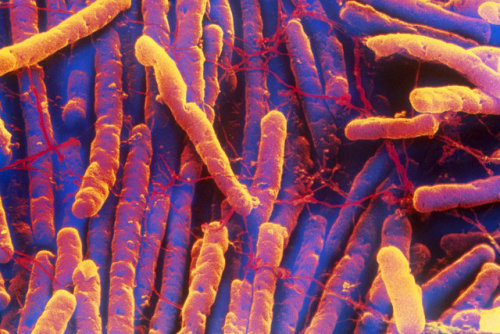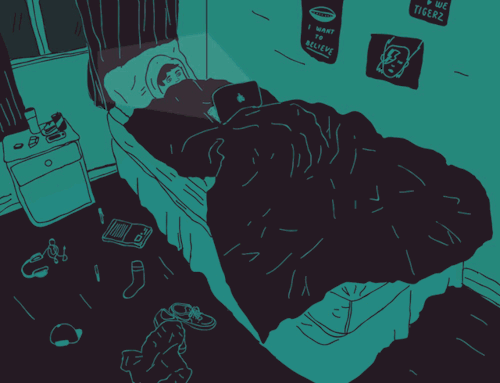✧ Check Out Our Website Here ✧




✨ Follow @psych2go for more! ✨
✧ Check out our website here ✧
More Posts from Karlfelersii and Others


Brain’s Immune Cells Linked to Alzheimer’s, Parkinson’s, Schizophrenia
Researchers at UC San Diego School of Medicine and the Salk Institute have, for the first time, characterized the molecular markers that make the brain’s front lines of immune defense — cells called microglia — unique. In the process, they discovered further evidence that microglia may play roles in a variety of neurodegenerative and psychiatric illnesses, including Alzheimer’s, Parkinson’s and Huntington’s diseases as well as schizophrenia, autism and depression.
Genes that have previously been linked to neurological diseases are turned on at higher levels in microglia compared to other brain cells, the team reported in Science on May 24, 2017. While the link between microglia and a number of disorders has been explored in the past, the new study offers a molecular basis for this connection.

Rat microglia are shown here in green, neurons in red
“These studies represent the first systematic effort to molecularly decode microglia,” says Christopher Glass, PhD, professor at UC San Diego School of Medicine. “Our findings provide the foundations for understanding the underlying mechanisms that determine beneficial or pathological functions of these cells.” Glass led the study with Salk’s Rusty Gage, PhD.
More work is needed to understand exactly how microglia may be altered in people with diseases, but the new molecular profile of microglia offers a way for researchers to begin trying to better culture the cells, or coax stem cells to develop into microglia for future studies.
For more about this study, read the paper and press release.

Go hygiene!
C. Diff Infections Are Falling, Thanks To Better Cleaning And Fewer Antibiotics
The risk of getting a deadly, treatment-resistant infection in a hospital or nursing home is dropping for the first time in decades, thanks to new guidelines on antibiotic use and stricter cleaning standards in care facilities.
The rate of new Clostridium difficile or C. diff infections climbed year after year from 2000 to 2010, researchers found. But an early look at 2011-2014 data from the Centers for Disease Control and Prevention’s Emerging Infections Program suggests infection rates are improving.
“Preliminary analyses suggest a 9 to 15 percent decrease in health care [C. diff] incidence nationally,” says Dr. Alice Guh, a medical officer at the CDC. “It’s very encouraging, but there’s still a lot to do.”
C. diff infections, which rose for decades, are now falling, according to the CDC. David Phillips/Science Source
6 Reasons Why Smart People Cant Find Happiness

Happiness is the feeling of contentment and satisfaction that is craved by many but only achieved by some. Happiness is relative and subjective. But for many successful individuals, the presence of a great family life and a flourishing career is often not enough. On some occasions these do not prevent an smart individual from feeling a sense of loneliness, often sadness and melancholy.
Here are six psychological reasons why smart people have a harder time finding happiness.
1. Intelligent people over-analyze
Many individuals with high levels of intelligence often over think and analyze everything that occurs in their life and surroundings. While their ability to analyze things is a great asset, the constant analysis of everything often lead to frustrations especially when coming up with an undesired conclusion.
Being able to see through people’s intentions is a burden that most people don’t get to carry. Oftentimes, knowing how ugly the real world is like is……
Continue Reading Here

New Western University research shows that neurons in the part of the brain found to be abnormal in psychosis are also important in helping people distinguish between reality and imagination.
The researchers, Dr. Julio Martinez-Trujillo, principal investigator and professor at Western University’s Schulich School of Medicine & Dentistry and Dr. Diego Mendoza-Halliday, postdoctoral researcher at M.I.T., investigated how the brain codes visual information in reality versus abstract information in our working memory and how those differences are distributed across neurons in the lateral prefrontal cortex region of the brain. The results were published today in Nature Communications.
“Neuronal population coding of perceived and memorized visual features in the lateral prefrontal cortex” by Diego Mendoza-Halliday & Julio C. Martinez-Trujillo in Nature Communications. Published online June 1 2017 doi:10.1038/ncomms15471

Researchers Discover Key Link Between Mitochondria and Cocaine Addiction
For years, scientists have known that mitochondria—the power source of cells—play a role in brain disorders such as depression, bipolar disorder, anxiety and stress responses. But recently scientists at the University of Maryland School of Medicine (UMSOM) have identified significant mitochondrial changes in brain cells that take place in cocaine addiction, and they have been able to block them.
In mice exposed repeatedly to cocaine, UMSOM researchers were able to identify an increase in a molecule that plays a role in mitochondria division (or fission) in a reward region of the brain. Researchers were able to block this change by using a special chemical, Mdivi-1. The researchers also blocked responses to cocaine by genetically manipulating the fission molecule within the mitochondria of brain cells, according to research published in Neuron.
“We are actually showing a new role for mitochondria in cocaine-induced behavior, and it’s important for us to further investigate that role,” said Mary Kay Lobo, PhD, Associate Professor of Anatomy and Neurobiology.
The researchers initially studied the mitochondria in cocaine-exposed mice and determined that mitochondria fission increased in the major reward region of the brain. To confirm this same change in humans, researchers were able to identify similar changes in the mitochondrial fission molecule in tissue collected from post mortem individuals who were cocaine dependents.
Dr. Lobo said that this latest research could help UMSOM researchers better understand changes in brain cells and mitochondria from other addictive disorders. “We are interested to see if there are mitochondrial changes when animals are taking opiates. That is definitely a future direction for the lab,” she said.

Submitted by musiq4thieves
For more posts like these, go visit psych2go
Psych2go features various psychological findings and myths. In the future, psych2go attempts to include sources to posts for the for the purpose of generating discussions and commentaries. This will give readers a chance to critically examine psychology.










Superstitions around the world.
Anyone interested in a psychology article about superstitions and why some people believe in them? Follow me and I will make a post @mypsychology
Why do we dream?

In the 3rd millennium BCE, Mesopotamian kings recorded and interpreted their dreams on wax tablets. In the years since, we haven’t paused in our quest to understand why we dream. And while we still don’t have any definitive answers, we have some theories. Here are seven reasons we might dream.

1. In the early 1900’s, Sigmund Freud proposed that while all of our dreams, including our nightmares, are a collection of images from our daily conscious lives, they also have symbolic meanings which relate to the fulfillment of our subconscious wishes. Freud theorized that everything we remember when we wake up from a dream is a symbolic representation of our unconscious, primitive thoughts, urges and desires. Freud believed that by analyzing those remembered elements, the unconscious content would be revealed to our conscious mind, and psychological issues stemming from its repression could be addressed and resolved.

2. To increase performance on certain mental tasks, sleep is good, but dreaming while sleeping is better. In 2010, researchers found that subjects were much better at getting through a complex 3D maze if they had napped and dreamed of the maze prior to their second attempt. In fact, they were up to ten times better at it than those who only thought of the maze while awake between attempts, and those who napped but did not dream about the maze. Researchers theorize that certain memory processes can happen only when we are asleep, and our dreams are a signal that these processes are taking place.

3. There are about ten thousand trillion neural connections within the architecture of your brain. They are created by everything you think, and everything you do. A 1983 neurobiological theory of dreaming, called “reverse learning,” holds that while sleeping, and mainly during REM sleep cycles, your neocortex reviews these neural connections and dumps the unnecessary ones. Without this unlearning process, which results in your dreams, your brain could be overrun by useless connections, and parasitic thoughts could disrupt the necessary thinking you need to do while you’re awake.

4. The “Continual Activation Theory” proposes that your dreams result from your brain’s need to constantly consolidate and create long term memories in order to function properly. So when external input falls below a certain level, like when you’re asleep, your brain automatically triggers the generation of data from its memory storages, which appear to you in the form of the thoughts and feelings you experience in your dreams. In other words, your dreams might be a random screensaver your brain turns on so it doesn’t completely shut down.

5. Dreams involving dangerous and threatening situations are very common, and the Primitive Instinct Rehearsal Theory holds that the content of a dream is significant to its purpose. Whether it’s an anxiety filled night of being chased through the woods by a bear, or fighting off a ninja in a dark alley, these dreams allow you to practice your fight or flight instincts and keep them sharp and dependable, in case you’ll need them in real life. But it doesn’t always have to be unpleasant; for instance, dreams about your attractive neighbor could actually give your reproductive instinct some practice too.

6. Stress neurotransmitters in the brain are much less active during the REM stage of sleep, even during dreams of traumatic experiences, leading some researchers to theorize that one purpose of dreaming is to take the edge off painful experiences to allow for psychological healing. Reviewing traumatic events in your dreams with less mental stress may grant you a clearer perspective and an enhanced ability to process them in psychologically healthy ways. People with certain mood disorders and PTSD often have difficulty sleeping, leading some scientists to believe that lack of dreaming may be a contributing factor to their illnesses.

7. Unconstrained by reality and the rules of conventional logic, in your dreams your mind can create limitless scenarios to help you grasp problems and formulate solutions that you may not consider while awake. John Steinbeck called it “the Committee of Sleep” and research has demonstrated the effectiveness of dreaming on problem solving. It’s also how renowned chemist August Kekule discovered the structure of the benzene molecule, and it’s the reason that sometimes the best solution for a problem is to “sleep on it”.
And those are just a few of the more prominent theories. As technology increases our capability for understanding the brain, it’s possible that one day we will discover the definitive reason for them; but until that time arrives, we’ll just have to keep on dreaming.
From the TED-Ed Lesson Why do we dream? - Amy Adkins
Animation by @clamanne
-
 formbephatab liked this · 1 year ago
formbephatab liked this · 1 year ago -
 covenawhite66 liked this · 2 years ago
covenawhite66 liked this · 2 years ago -
 tonushy liked this · 2 years ago
tonushy liked this · 2 years ago -
 rhaedarofworlds reblogged this · 4 years ago
rhaedarofworlds reblogged this · 4 years ago -
 kurisuheat reblogged this · 5 years ago
kurisuheat reblogged this · 5 years ago
